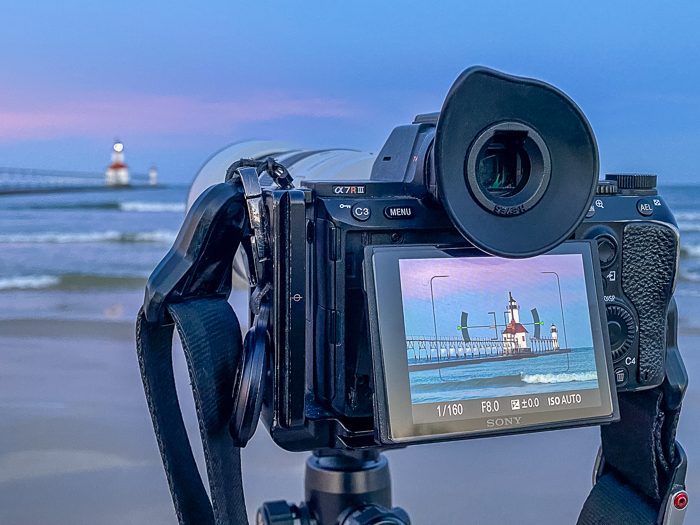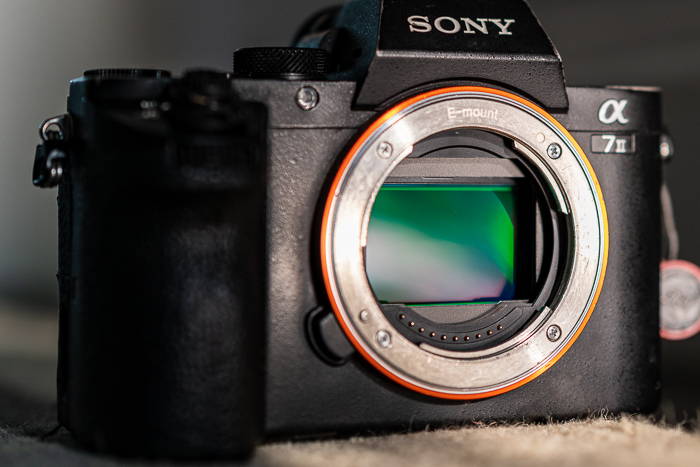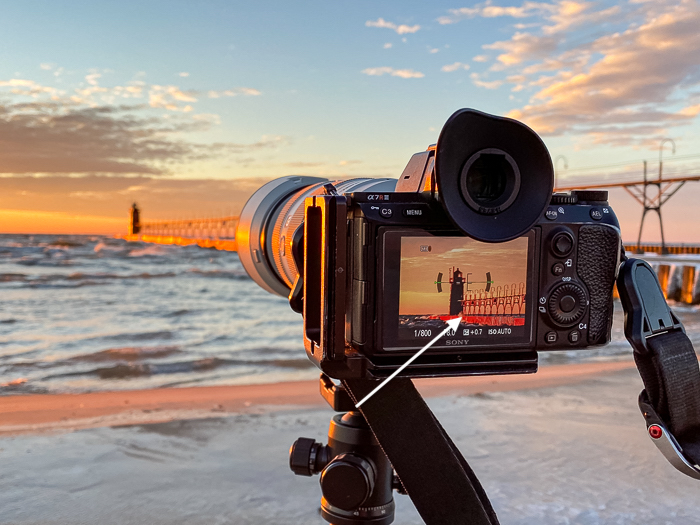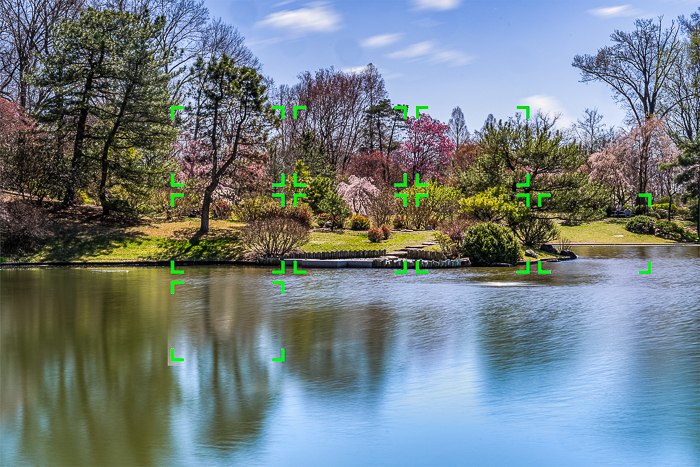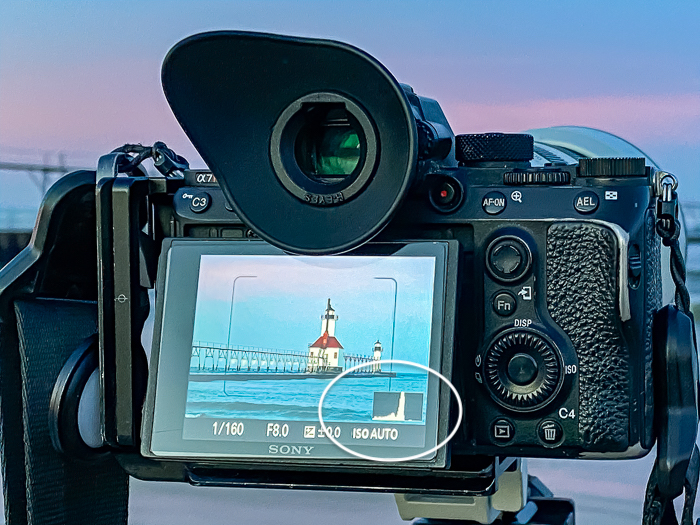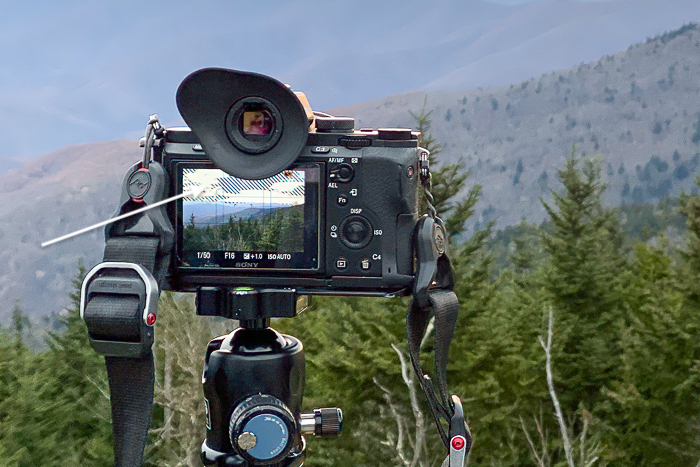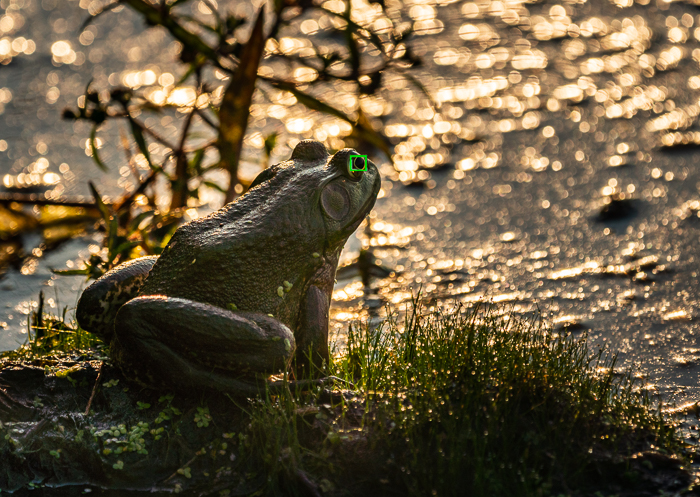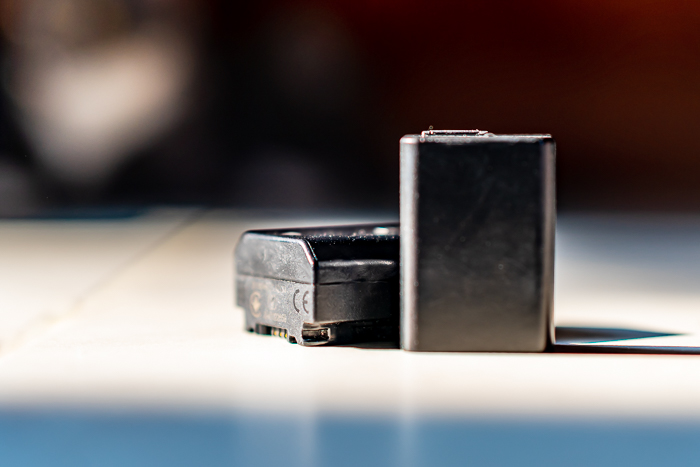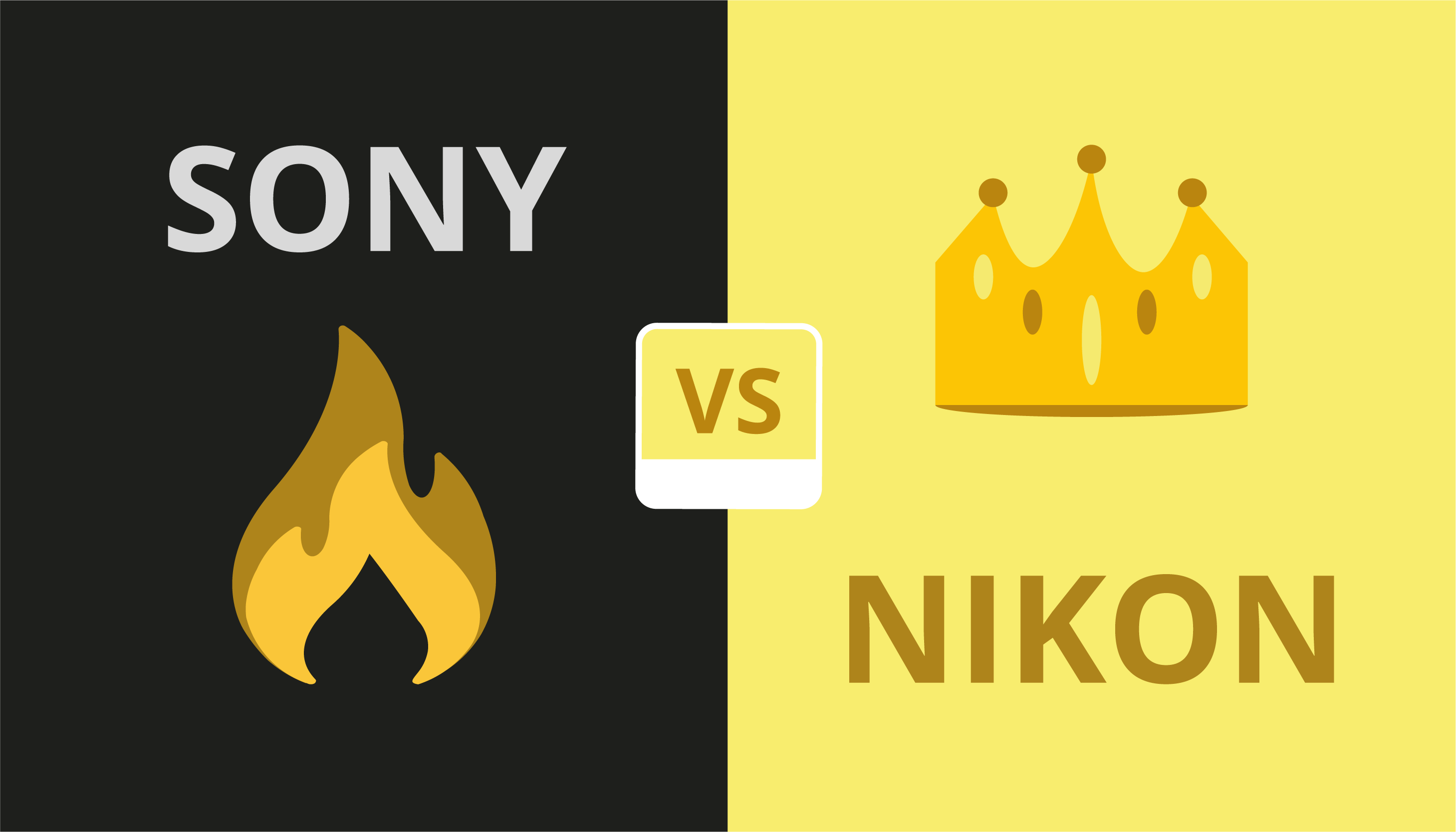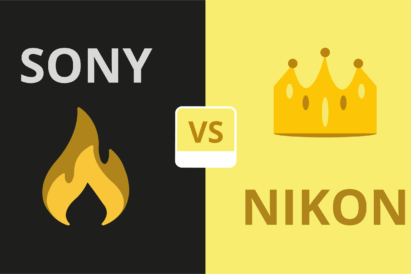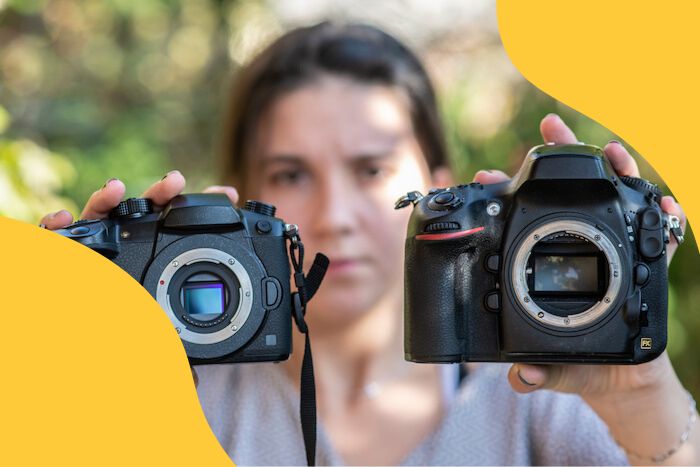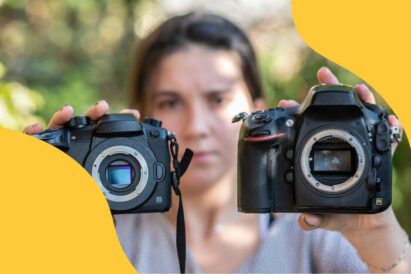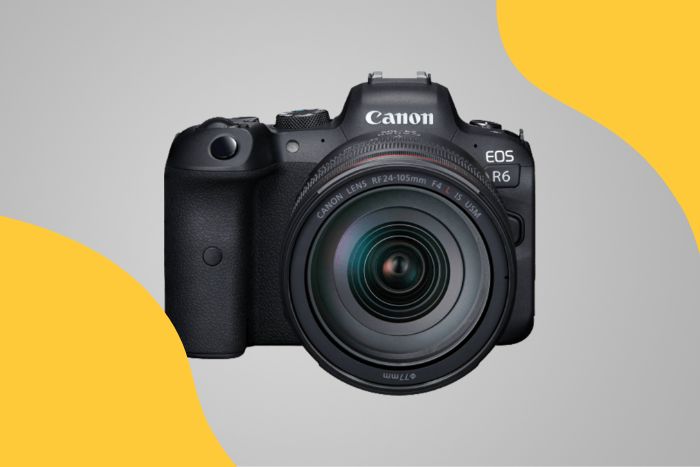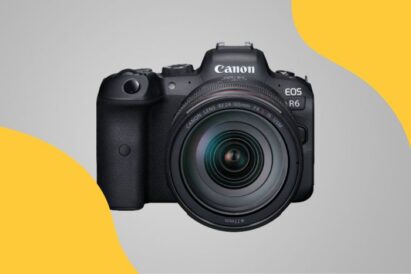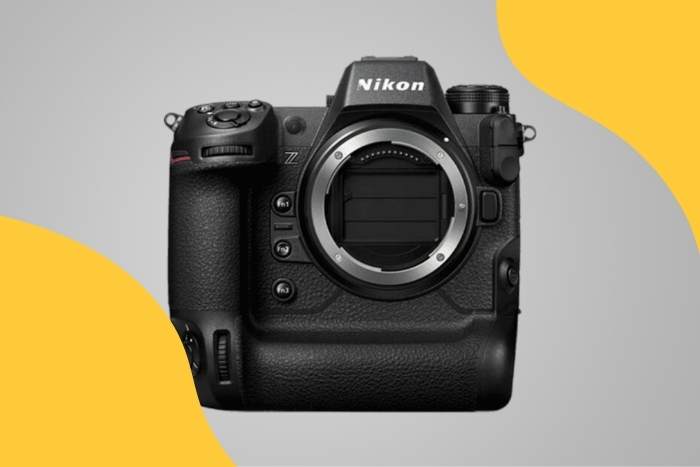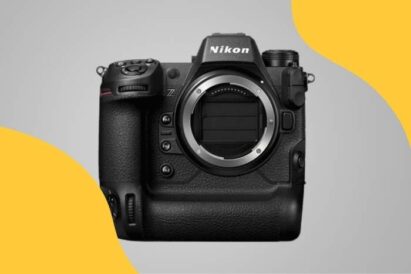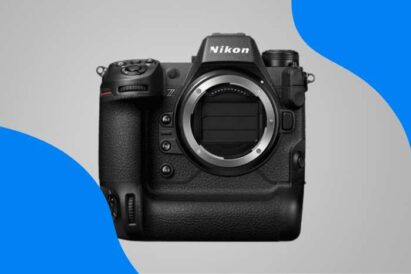Over the last decade, there has been a hot debate about DSLR vs. mirrorless cameras. You may already be wondering about the benefits of mirrorless cameras. What’s all the fuss about?
Sony and Fuji came down early on the mirrorless side. The companies have been working on their mirrorless lineup for years. Nikon and Canon held out for their DSLR line but shifted towards mirrorless. They are quickly playing catch-up and have released new versions at lightning speed.
It looks like DSLR is going the way of film cameras. The future is mirrorless.
Let’s look at mirrorless cameras’ advantages over their DSLR counterparts. If you have never used a mirrorless camera, here are 19 benefits of mirrorless cameras. Some features may surprise you. It may be time to make the switch!
Mirrorless vs. DSLR Cameras
The main difference between a mirrorless vs a DSLR camera body is, well, the mirror.
DSLR stands for Digital Single-Lens Reflex. It describes the way the camera works. “Reflex” refers to the mirror or reflection. On an SLR camera, light comes into the camera and is reflected up into the viewfinder. This is an optical viewfinder. It lets you see what your camera sees. Looking through an optical viewfinder is like looking through a window. Pressing the shutter button moves the mirror out of the way to let light hit the sensor and record the image.
There is no mirror inside a mirrorless camera body. Pressing the shutter button opens a door that exposes your sensor to light. An electronic viewfinder (EVF) replaces the mirror. This lets you see the image coming into the camera. In essence, you are looking at a projection of the frame. Looking through an EVF is like watching a TV.
The earliest versions of mirrorless cameras had basic EVFs that were grainy and slow. Newer mirrorless cameras have by and large sorted out the EVF problems. You will forget that you are not seeing the real world through your viewfinder.
Many mid-to-high-end DSLRs now have an LCD screen. In Live View mode, the image projects an image onto the LCD screen. Live View has some of the same features as EVF.
Panasonic released the first mirrorless camera in 2008. Canon released their first mirrorless camera a decade later. Without the physical mirror mechanism, camera design is more flexible. Cameras can be smaller and function more efficiently. Let’s look at the advantages of a mirrorless camera.
1. See Exactly how Your Camera Records with EVF (Live Preview)
Many benefits mirrorless cameras offer stem from the use of electronic viewfinders (EVF). One of the advantages is a live preview. This is the one single feature that made me decide to go mirrorless. With an optical viewfinder, you see the world as it is. With an EVF, you see the world as your camera records it. You don’t have to guess at the correct exposure setting.
When you change the aperture or ISO settings, you see the effect on your image. Add a little exposure compensation and your view immediately brightens. You know what you will get each time you click the shutter—no more chimping to see if your exposure settings are right. You can dial in settings before clicking the shutter button, and you can change settings without looking away from the scene.
There are a lot of benefits to seeing the world on a video screen. Let’s look at a few more.
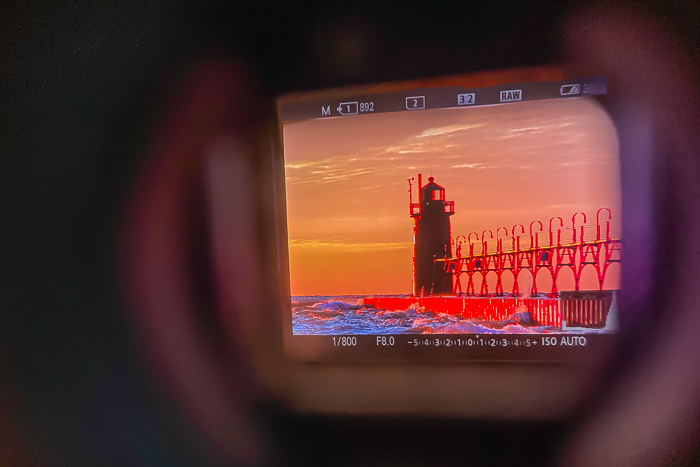
2. Focus Peaking for Precise Manual Focus
If you use a mirrorless camera and don’t know what focus peaking is, you are in for a treat.
With focus peaking, your camera highlights what is in focus. A coloured outline appears around anything in focus. This makes manual focus easier and more precise.
When you are manually focusing, this is a must-have. Macro photography lets you see which sliver of field is in focus. When manually focusing on animals or people, you can target any part of the body for focus. You do not have to rely on your eyes or your best judgment. Put focus right where you want it. Never miss focus again.
3. Magnify Assist for Manual Focus
Manual focus becomes easier when you can zoom into your subject for a closer look. With EVF, you can magnify the scene as a focus assist. This feature helps you get the right part of the image in focus every time. Depending on your camera, you can set the magnification assist to activate automatically when you manually focus. You may also be able to change the zoom range.
4. Use Visible Focus Points to Remove Guesswork
Focus points are visible in the EVF. This includes focus points that change while you are continuously tracking a subject. There is no guesswork when focusing on a mirrorless camera. You know exactly where the camera is focusing. DSLR cameras with Live View also have some of these EVF features. But you must hold the camera away from you and use the LCD screen. With mirrorless cameras, you can see the focus assists in the viewfinder.
5. Live Histogram Helps you Change Settings Seamlessly
The camera histogram shows the light in the scene on a graph. This helps you get your exposure just right. A common recommendation is to expose to the right. This means that the light is brighter, and you can see this by the peaks on the right side of the histogram.
Mirrorless cameras tend to show the histogram in the corner of the EVF. It previews the light in the scene in real-time and changes as you move the camera. Without taking your eye from the viewfinder, you can tweak the exposure compensation or f-stop. The histogram reflects the changes you have made to your exposure. There is no beating a mirrorless camera when changing camera settings on the fly.
6. Overexposure Warning: Zebra Stripes
In addition to the histogram, another benefit of mirrorless cameras is many have zebra stripes. These warn you when you are overexposing your image. They are called zebra stripes or blinkies because the overlay takes the form of animated black and white stripes.
7. Digital Information Displayed
In mirrorless cameras, the EVF replaces the mirror. There are many benefits of an EVF. One of the best is seeing your settings through the viewfinder overlayed on the scene. Most mirrorless cameras let you set up the EVF to display all sorts of digital information. You can see your settings and other information on the screen.
Do you sometimes forget what ISO you are using? Look in the corner of the screen. Wonder if you are using the best focus or metering mode? Check your current setting without recomposing.
Many photographers are in the habit of checking the edges of the frame for composition. Mirrorless photographers can easily scan their settings before pressing the shutter button.
8. Better Low Light Auto-Focus for Night Owls
Mirrorless cameras are often better at autofocusing in low-light conditions. This means you can continue to use the high-powered auto-focus in the evening or dark indoor situations. This is perfect for night and astrophotographers. The Sony A7SIII is a specially designed camera for low-light photography.
9. Eye Focus Benefits Portrait and Wildlife Shots
A focusing feature essential to portrait and wildlife photography is eye focus. Some DSLR users may have eye focus in Live View. But that means using the screen on the back of the camera. Mirrorless camera companies have started adding animal eye focus. The feature works surprisingly well. The system detects even small eyes on animals and birds at a distance.
10. Smaller Size and Lighter Weight
When mirrorless cameras first appeared, smaller and lighter weight were the most significant selling points. Because the cameras do not have a physical mirror, manufacturers had more design flexibility. They can make the cameras smaller and lighter. Let’s look at a specific mirrorless vs. DSLR example. The DSLR Canon EOS 1D X Mark III weighs 1440g (3.1 lb). The mirrorless Canon EOS R5 is half that at 738g (1.62 lb).
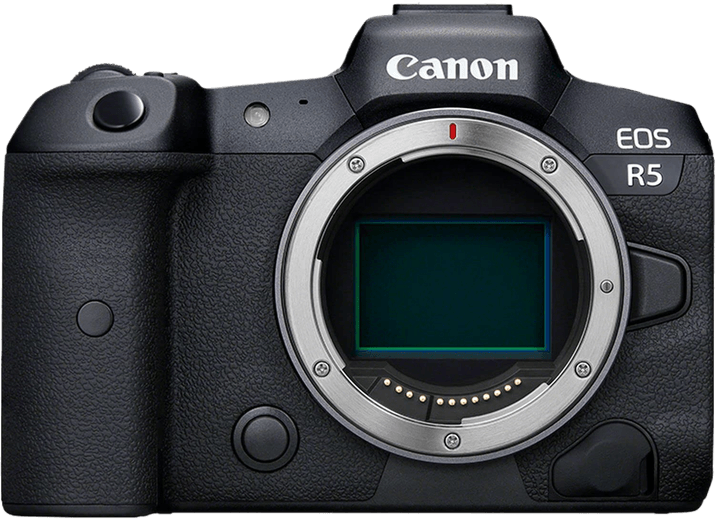
Canon EOS R5
Where the weight and size benefits fail a bit is with the lenses. Mirrorless lenses are not necessarily smaller than their DSLR counterparts. A small, light camera becomes a big camera when you mount a heavy lens on the front.
Also, mirrorless camera manufacturers found a sweet spot when it comes to handling the camera. Sony has slightly increased the size of the newer generation mirrorless cameras. This is partially to accommodate larger batteries. But the somewhat larger size also makes the camera more comfortable to handle. When comparing like-with-like, there is still a size and weight difference. Fuji cameras are smaller, but they also have a smaller APS-C sensor.
You will shave off some weight with a mirrorless camera. But unless you also move to a smaller sensor, the difference may be less than you think.
11. Silent Shooting for Photographing Wildlife
Because there is no physical mirror to move, the shutter sound is unnecessary on mirrorless cameras. Some Photographers often like the feedback of the click. But mirrorless cameras let you choose to shoot silently.
If you have always had a camera with an audible click, you may not realise the benefits of stealth. There are many cases where silent mode is best.
When a rare bird flew into the area, the bird paparazzi appeared. The soundtrack was rapid-fire, clicking every time the bird moved. Surely if I can hear it, so can the bird. This is why I use silent mode when photographing wildlife with my mirrorless cameras.

You may not want to distract someone on the street. Silent mode lets you hide when you take a shot and how many times you press the shutter button. You may want to silence your camera out of respect during a religious ceremony like a wedding or funeral. Silent mode lets you take photos where cameras are distracting, like during a concert or filming.
12. Reduced Vibration for Clear Shots
Mirrorless cameras do not have a physical mirror to move during shutter press. This reduces vibration, and you are less likely to introduce camera-based motion blur into the image. Even with similar optical stabilisation, moving a mechanical shutter creates more vibration. Some DSLRs let you lock up the mirror to reduce shutter vibration.
13. Better Image Stabilisation that DSLRs
Another of the benefits of mirrorless cameras is having better image stabilisation than their DSLR cousins. Image stabilisation counteracts natural camera shake introduce mainly by you hand-holding the camera. Most DSLR cameras have a 2-axis image stabilisation system. The camera counters shake vertically and horizontally. Many mirrorless cameras have a 5-axis image stabilisation system. Plus, the image stabilisation system is in the camera rather than the lens. Or in addition to lens-based image stabilisation. This means that the stabilisation system works with older lenses. If you are a particularly shaky photographer or like to hand-hold at slow shutter speeds, a mirrorless camera is for you.
14. Eliminate Long Exposure Light Leaks
Light leaks can be a problem with a DSLR camera during daytime long exposures. Taking a long exposure means holding your shutter open for an extended period of time. This is not a problem at night. But during the day, extra light can get into your camera. A neutral density filter blocks light from hitting your sensor. But light can get in through the optical viewfinder.
Light leaks are not an issue with mirrorless cameras. Light is only coming into your camera through the lens.
15. High Burst Rate for Faster Shooting
Not having a physical mirror to move means the mirrorless cameras are faster. This shows in frames per second burst rate. Mirrorless cameras can shoot more frames per second than DSLR. High-end mirrorless cameras have an electronic shutter option. This moves physical barriers away from the sensor and lets you shoot much faster.
The Sony Alpha 1 shoots at 30 fps with its electronic shutter. Each of these frames is 50.1MP. A DSLR may shoot at half that speed. Plus, there are no blackouts as the mirror moves in away from the sensor, blocking what you can see through the viewfinder.
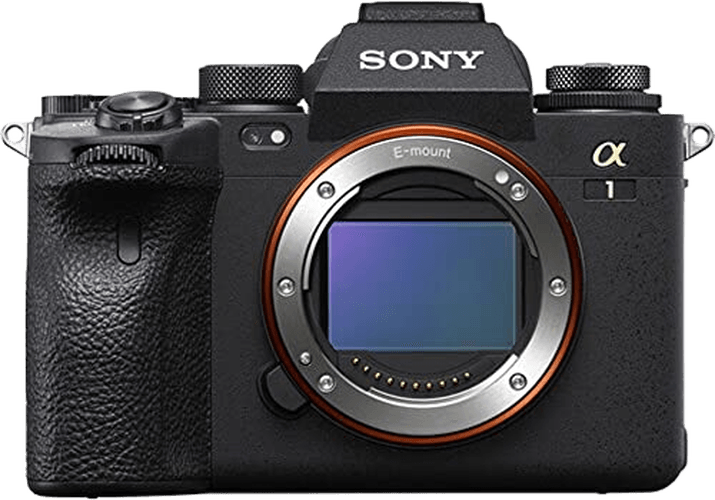
Sony a1
16. Better Video Quality
Mirrorless cameras make great video cameras. This is partly because manufacturers have prioritised video features in their mirrorless cameras. You can take still photos. Then easily transition to video. The cameras are easier to use for travelling videographers. Also, the high-end cameras include real-time autofocus.
17. Comparable Battery Life
Some of the disadvantages to mirrorless have faded with newer generations. Battery life, lens selection, and EVF quality have improved with each generation of mirrorless cameras. EVF has a lot of functionality. The downside is that they consume a lot of power. You get more, but you pay for it in battery life. This is also true if you use Live View on DSLR cameras.
Fortunately, camera manufacturers recognised this issue. They responded with more powerful batteries. When Sony released their third generation of mirrorless full-frame cameras, they included a larger battery. Battery life is no longer a liability for mirrorless cameras. You can shoot all day on one of the larger mirrorless batteries. If you must change a battery during the day, the couple of seconds this takes is worth all the extra EVF features.
18. Comparable Lens Selection
Many photographers stayed with their DSLR cameras even when it became clear that the tide was turning towards mirrorless. The reason was their DSLR lenses. It would cost too much to change to a different lens system. Also, there was a limited selection of mirrorless interchangeable lenses at first. This is no longer the case. Today, you have a wide variety of mirrorless lens choices. Also, most of the top third-party lens manufacturers include mirrorless options.
With both Nikon and Canon moving to mirrorless, they have released a series of mirrorless lenses to go with their new systems.
19. Comparable Image Quality
When considering mirrorless vs. DSLR cameras, the image quality is comparable. It is not that a mirrorless camera will make better quality images than a DSLR camera. A mirrorless camera helps you get the quality shot. The electronic viewfinder includes tools like focus peaking and zebra stripes to ensure your photos are technically correct. Removing the physical mirror opens the camera up to additional features like faster frame rates.
Our Verdict
Mirrorless cameras are the future of photography. With Nikon and Canon developing their mirrorless systems, the tide has turned. Without the physical mirror, camera designers have greater design flexibility. They can make choices that focus on the feel and usability of the camera. The photographer, not the physics, determines the design. Without the mirror, the camera can be faster and silent.
Electronic viewfinders replace the mirror. But it is not just a one-to-one substitution. Features are packed into the EVF to help photographers get the best images possible. A mirrorless camera does not necessarily take better photos than a DSLR, it just seems that way. Mirrorless cameras give photographers more tools to get quality images every time.
Before you go, why not check out these trending mirrorless camera spec comparisons:
If you’re interested in finding out more technical info, check out this post on the most important parts of camera and what they do!


